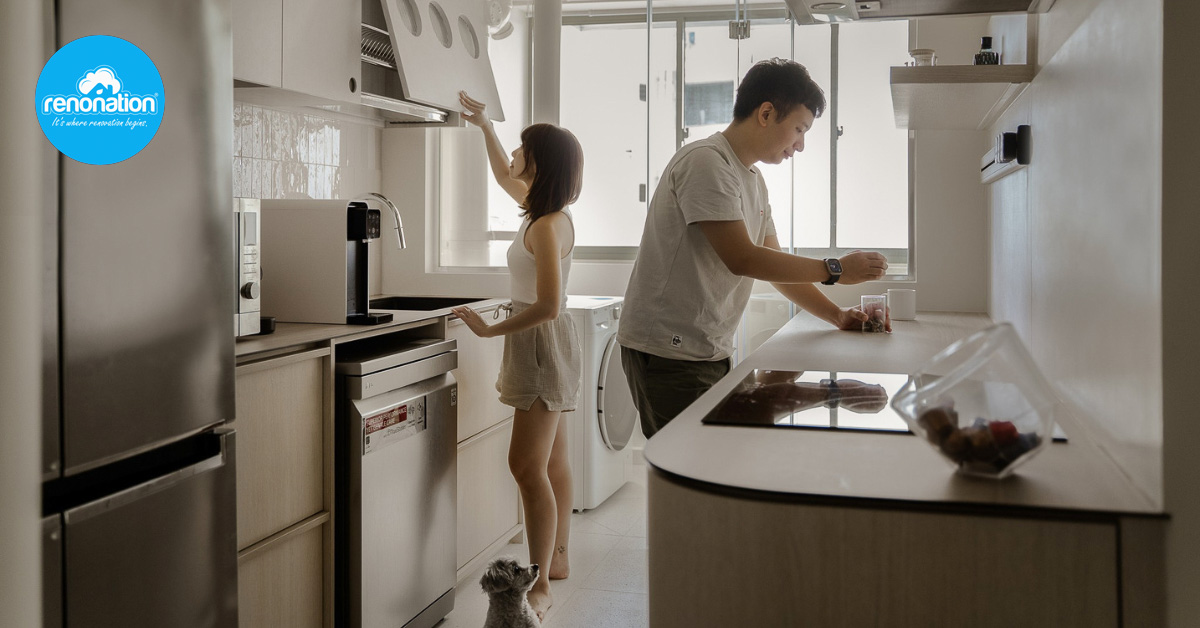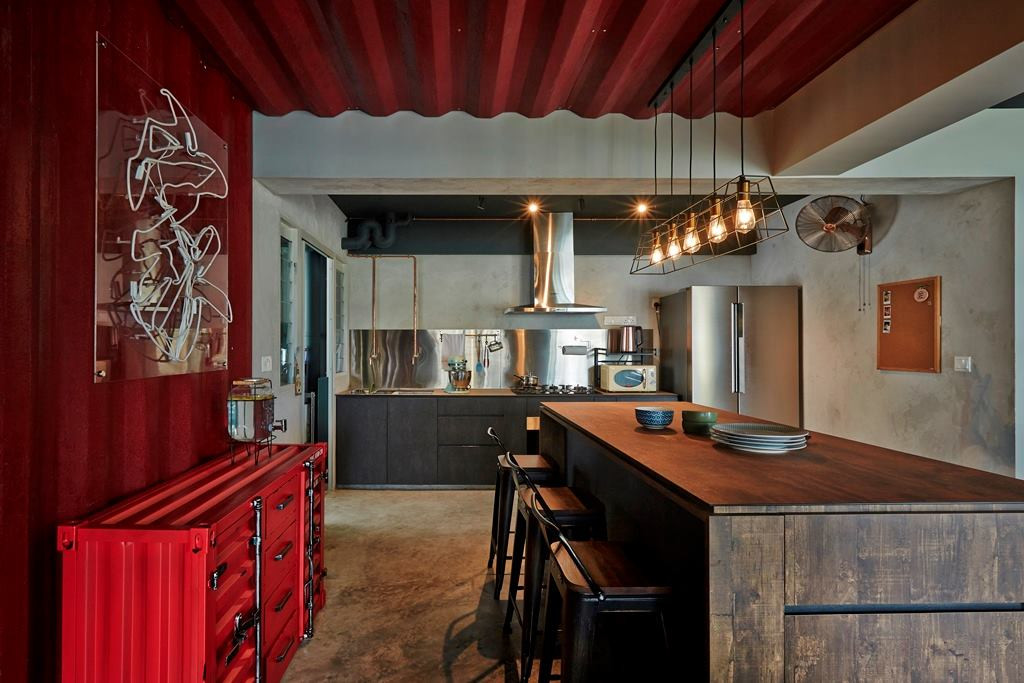6 Home Repairs You Can DIY So You Won't Need to Waste Money on a Contractor
- May 12, 2017
If you’re particularly handy around the house, good for you – this article is not for you. This post is for homeowners whose contractors are on first-name basis with them, not because they’re overly-friendly, but because they are overly-reliant. You know who you are. You’re the sort that speed dials your contractor every time there’s something that needs fixing at home. Blown light bulb. Wobbly door hinge. Framed family pictures that you have been sitting on for the past year but suddenly require putting up.
 Design: The Scientist
Design: The Scientist
In truth, these repair jobs can be fixed by yourself even if you don't have a lot of experience doing DIYs, and there really isn’t a need to call a professional and waste money. Of course, there are some things better left to your contractor e.g. electrical wiring work and tedious plumbing jobs, but for everything else, you should probably handle it yourself.
 Source: 123rf.com
Source: 123rf.com
To find out if you should go the professional route rather than the DIY route, see if a) the repair job costs more money (remember to count in the cost for tools!) to fix it up yourself rather than hiring a professional, b) it’s dangerous enough to kill you and c) it requires a permit.
We list 6 common problems around the home that we think are simple enough to DIY so you don’t have to rely on a contractor.1. Dent in drywall
Partitions and dividers in our homes are usually done up using drywall, which make construction faster than using traditional brick and plaster materials. The former’s smoother surface makes it a more popular choice than conventional plaster walls. But minor dents and dings are particularly susceptible for drywalls, but it’s not what a DIY job can’t fix. If the damage isn’t too deep, stick a patch of adhesive fiberglass mesh tape over the dent. Then apply a coat of joint compound onto the patch using a putty knife. Once it has dried, you can apply another coat. Then sand the area down once the second coat is dried and touch it up with leftover paint.2. Hairline cracks on the wall
Hairline cracks are common problems that occur on walls that tend to expand and contract due to temperature changes throughout the day. They can also occur on walls that use poor quality paints.
 Source: Pixabay
Source: Pixabay
If you find a hairline crack on your wall, assess whether it’s truly hairline or evidence of a more serious structural problem. Hairline cracks are usually very thin (not more than 3mm in width) and don’t run across the entire wall. They also tend to occur at the edges of your wall rather than the middle.
Once you’re convinced that it’s a hairline crack, loosen up the crack using a utility knife and remove any leftover residue and debris using a dry cloth or a brush. Then fill up the hairline crack with joint compound and leave it to dry for a couple of hours. Once the area has dried, sand it down and touch it up with leftover paint.
TIP: If you continue to face cracks on your walls even after mending, you should rope in a professional at this point – you may be facing a structural issue.
3. Clogged kitchen sink
One of the most common plumbing problems at home is a clogged kitchen sink. And no wonder. With the things we throw down the kitchen sink every day – used cooking oil and leftovers – it’s no wonder it gets clogged over time. Instead of calling the plumber straightaway, here’s an infographic to illustrate four easy ways (and you don’t need wacky tools!) that may help to clear up the drain and fixing up your clogged sink.
 Source: The Secret Yumiverse
Source: The Secret Yumiverse
If the sink is still clogged after trying out the above methods, you should probably call your plumber.
4. Peeling wallpaper
Wallpapers, with its huge variety of patterns, prints and textures, can dramatically change the look of your home. But thanks to the humidity and moisture in our air, the edges of wallpaper can sometimes come off after some time. Wallpaper can also peel due to poor initial application.
In order to fix this, apply wallpaper paste (find one in a tube for easy application) on the undersides of the peeled wallpaper and press it back into place. Wipe away excess adhesive with a clean cloth. Gently smoothen the seams with a roller or using your EZ-link card. A good way to make sure the wallpaper stays firmly place is to stick painter’s tape over the area and leave it overnight. Remove the painter’s tape gently the next day.
5. Mould and mildew
Mould and mildew occur in places that have a lot of moisture and poor ventilation, like your bathroom. Not only will they cause a bad smell, they are also bad for your health! In order to combat mould, there are a couple of natural methods you can use.
 Source: Pixabay
Source: Pixabay
You can mix baking soda with water (1 tsp baking soda to 2 cups of water) and dab it over the affected area with a scrubbing brush. Then, rinse the area with clean water.
Alternatively, pour white distilled vinegar (don’t dilute it with water) into a spray bottle and spray it over the infected area. Leave the solution to soak up the mould for a couple of hours without scrubbing it down. Then wipe the area clean with a wet cloth.
6. Cracked tiles
Tiles are one of the most functional materials for your surfaces. They don’t cost a lot and are incredibly easy to maintain. Great in bathrooms and kitchens, they have proven to be useful as backsplashes.
 Design: Inspire ID Group
Design: Inspire ID Group
But there’s a chance you may crack them in the course of time. Depending on how badly cracked the tile is, you can either a) use paint to cover up the crack or b) replace the tile.
If it’s a small crack, mix a small amount of paint (that matches the colour of your tiles) with a tile filler. Then fill in the mixture into the crack using a cotton bud and leave it to dry.
If the tile is more damaged, consider replacing the entire tile by sourcing for a replacement. Then purchase an adhesive that works with your tile material. Remove the broken tile by breaking the rest of it into smaller pieces using a hammer and a cloth placed over the tile. Clear the broken pieces and remove the adhesive underneath. Make sure the area you’re replacing your tile is free from debris and completely clean. Then, apply the adhesive onto the new replacement tile before setting it in place. Leave it overnight to dry. Once that is done, you may want to repair the grout around the tile that got cracked.
Do these home repairs sound easy enough to DIY? Are there any others around the house that you do it yourself? Tell us in the comments below!
Browse through the list of Interior Designers, their reviews and portfolios at http://www.renonation.sg/pr
Submit your renovation enquiry:
Meet Interior Designers. Get Quotes.
Get in touch with our listed renovation companies. They will provide you with a free non-obligatory estimate for any of the Renovation Packages included in their services.














